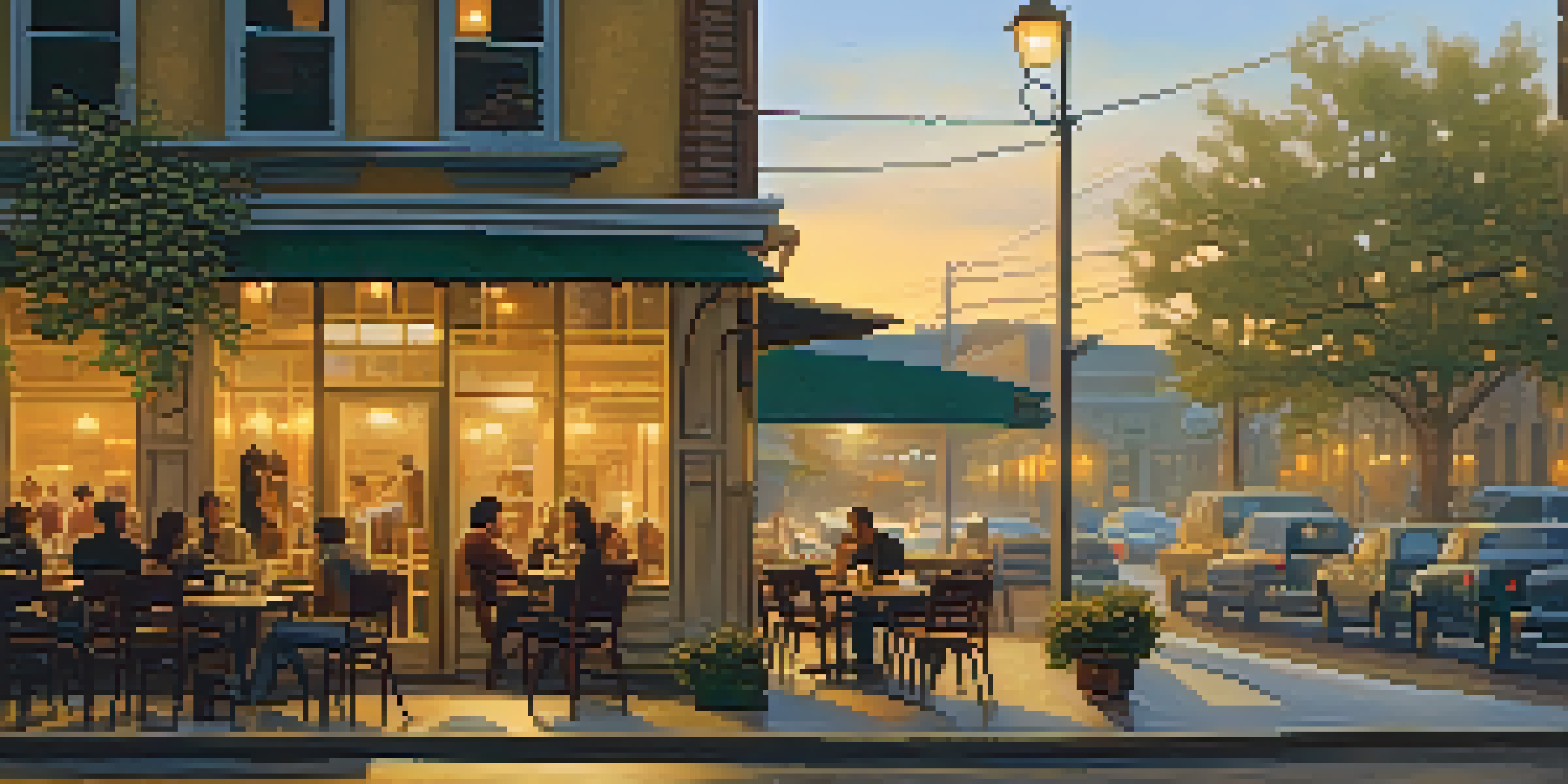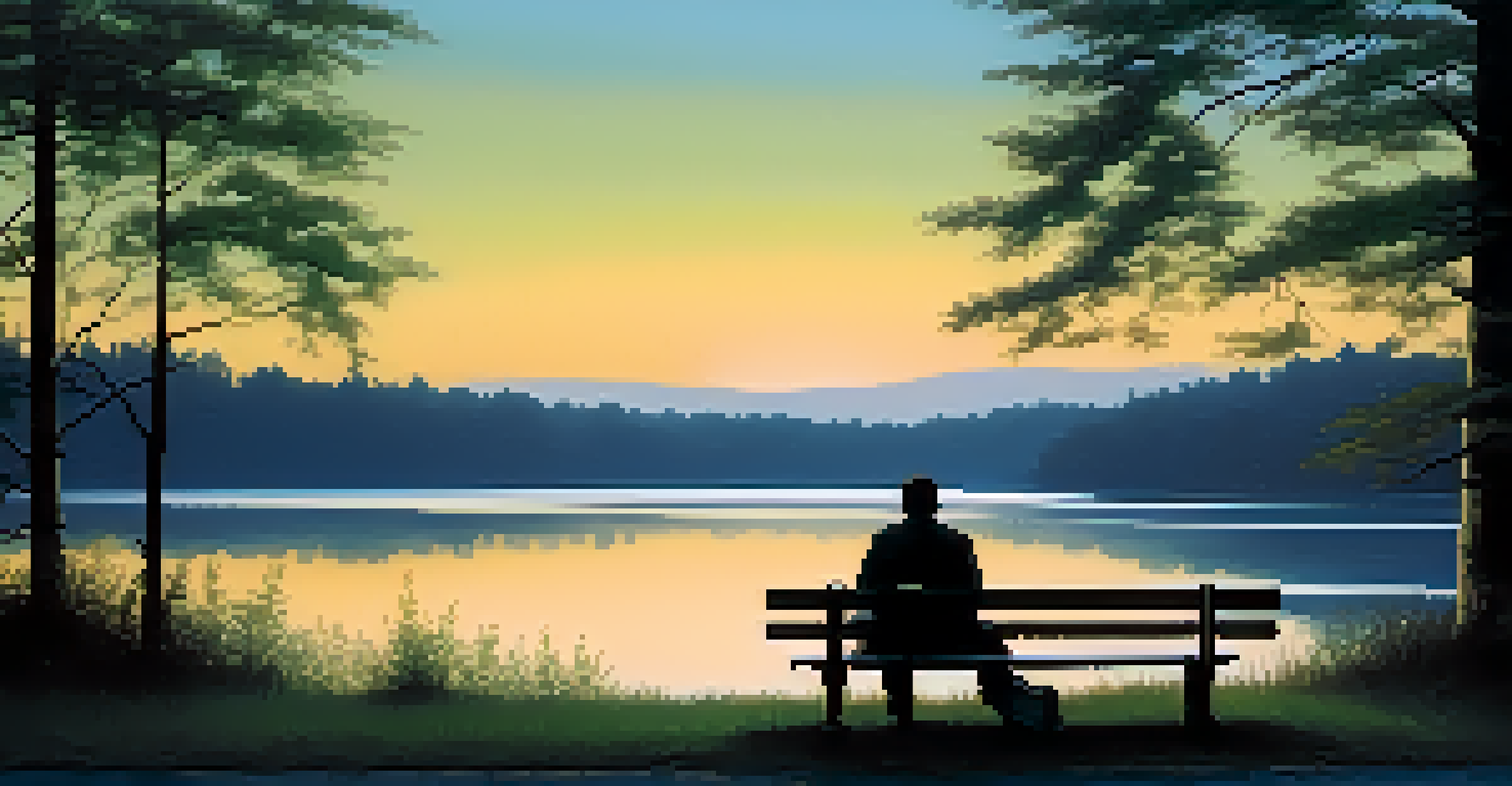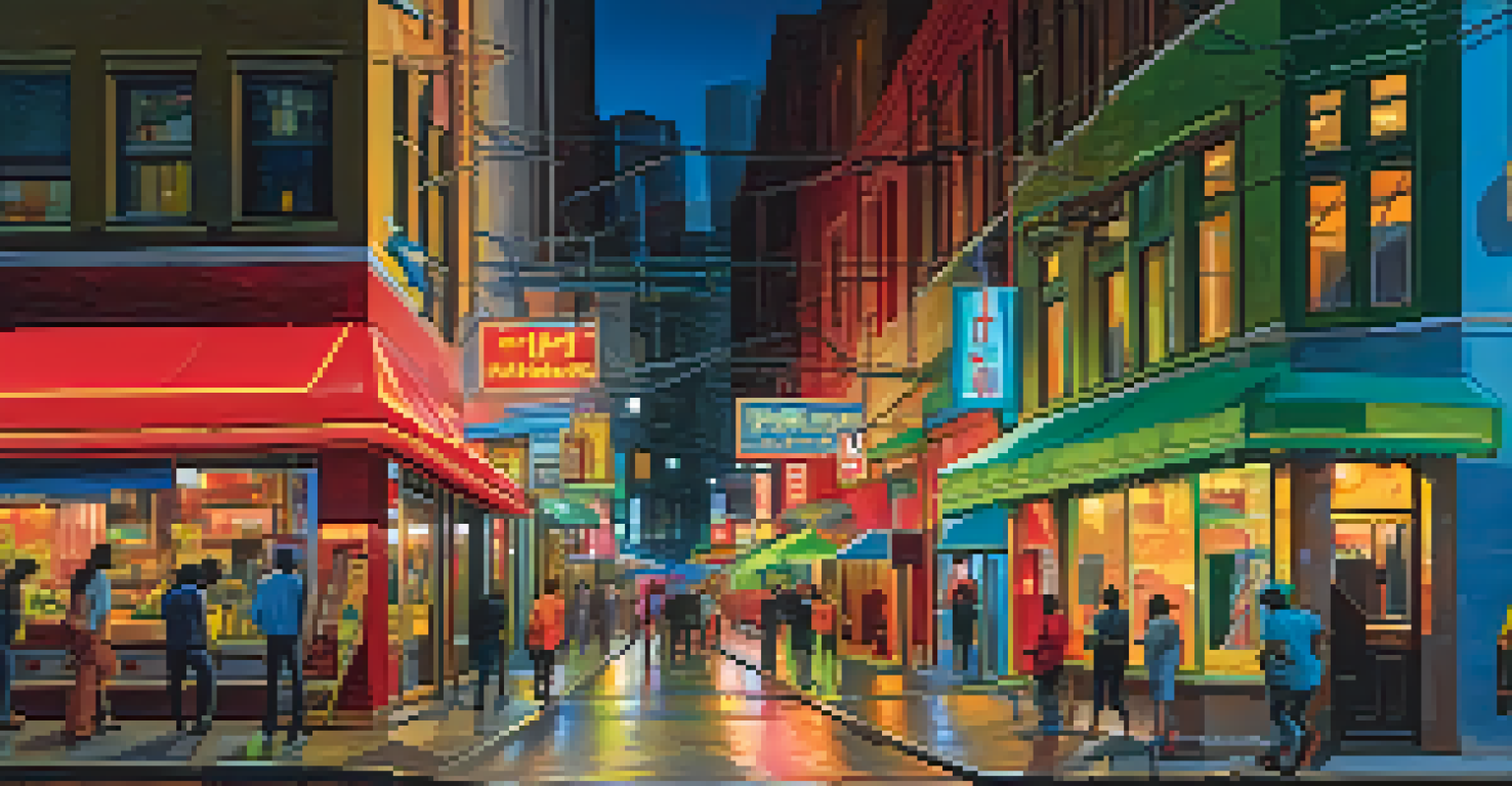The Impact of Warm and Cool Colors on Film Atmosphere

Understanding Warm and Cool Colors in Film
In the world of film, colors play a pivotal role in conveying emotions and setting the atmosphere. Warm colors, like reds and yellows, often evoke feelings of comfort, passion, or even danger. In contrast, cool colors such as blues and greens can create a sense of calm, sadness, or mystery. Filmmakers strategically choose these color palettes to enhance storytelling and engage the audience on a deeper level.
Color is the keyboard, the eyes are the harmonies, the soul is the piano with many strings.
Think about a romantic scene bathed in golden hues, where the warmth invites intimacy and affection. Alternatively, consider a suspenseful moment shrouded in cool blues, which might heighten tension and uncertainty. This emotional manipulation through color is a powerful tool that filmmakers use to guide viewers' reactions and interpretations of the story.
By understanding the psychology behind warm and cool colors, audiences can appreciate the intentional choices made by filmmakers. This awareness not only enriches the viewing experience but also highlights the intricate artistry involved in film production.
The Emotional Language of Warm Colors in Film
Warm colors are often associated with energy and warmth, making them a favorite for filmmakers aiming to elicit strong emotions. For example, a scene lit with vibrant reds can amplify feelings of love or anger, engaging viewers on an emotional level. This clever use of color can make moments more impactful and memorable.

Consider films like 'Amélie,' where warm tones dominate the visuals, creating a whimsical yet heartfelt atmosphere. The golden yellows and soft reds not only enhance the charm of the Parisian setting but also invite audiences into Amélie's world, filled with hope and curiosity. Such choices are deliberate, as they shape the viewer's emotional journey throughout the film.
Colors Shape Film Emotions
Warm and cool colors are strategically used in film to evoke specific emotions and enhance storytelling.
In essence, warm colors have the power to create a visceral connection between the film and its audience, elevating simple scenes into powerful emotional experiences.
The Significance of Cool Colors in Cinematic Storytelling
Cool colors, on the other hand, often serve to evoke feelings of detachment, sadness, or tranquility. These hues can be essential in scenes that require a more subdued or introspective mood. For instance, a dimly lit blue backdrop can suggest loneliness, effectively mirroring a character's internal struggle.
Colors speak all languages.
Films like 'The Shawshank Redemption' utilize cool color palettes to enhance themes of despair and hope. The contrast between the cold prison walls and moments of warmth symbolizes the characters' emotional states. This clever interplay of color allows the audience to visually and emotionally connect with the narrative.
Ultimately, cool colors are instrumental in shaping a film's atmosphere, guiding viewers through the emotional landscape of the story.
The Role of Color in Genre-Specific Film Atmospheres
Different film genres often employ color schemes that align with their thematic elements. For instance, horror films frequently utilize cool colors to create a chilling atmosphere, instilling fear and tension. The desaturated blues and greens can enhance the sense of dread, making viewers feel uneasy and on edge.
Conversely, romantic comedies usually favor warm colors to foster a light-hearted and inviting atmosphere. Bright yellows and soft pinks can create a sense of joy and excitement, drawing audiences into the love stories unfolding on screen. This strategic use of color helps set the tone and expectations for each genre.
Cultural Context of Colors
The meanings of colors can vary across cultures, adding layers of significance to a film's narrative.
By recognizing these genre-specific color trends, audiences can better appreciate how filmmakers craft unique atmospheres that resonate with viewers' emotions, making each genre distinct.
Color Contrast: Creating Visual Tension in Films
The interplay between warm and cool colors can create visual tension that enhances storytelling. When these colors are juxtaposed, they can evoke a sense of conflict or contrast, mirroring the narrative's themes. For example, a warm character surrounded by cool tones can symbolize their struggle against external forces.
In films like 'Blade Runner,' the stark contrasts between the warm neon lights and the cool, dystopian setting serve to highlight the characters' isolation. This visual dichotomy not only captivates viewers but also deepens their understanding of the characters' emotional states and conflicts.
Ultimately, the use of contrasting colors enriches the visual storytelling, allowing filmmakers to convey complex emotions and themes in a single frame.
Cultural Significance of Color in Film
Colors carry different meanings across cultures, and filmmakers often leverage these associations to enhance their narratives. For instance, while red may symbolize love in many Western cultures, it can represent danger or anger in others. Understanding these cultural nuances can add layers of meaning to a film's color choices.
Films that explore diverse cultures, such as 'Crouching Tiger, Hidden Dragon,' use color to reflect cultural heritage and emotional depth. The vibrant greens and reds not only showcase the beauty of the martial arts world but also resonate with viewers' cultural associations, enhancing their connection to the story.
Visual Tension Through Contrast
Juxtaposing warm and cool colors creates visual tension that mirrors narrative themes and character struggles.
By considering the cultural implications of color, filmmakers can create richer narratives that resonate with a global audience, bridging cultural divides through the universal language of color.
The Psychological Effects of Colors in Film
Colors can evoke specific psychological responses, and filmmakers take advantage of this phenomenon to influence audience emotions. For instance, warm colors can increase excitement and energy, while cool colors can induce calmness or sadness. This understanding allows filmmakers to craft scenes that resonate with viewers on an emotional level.
Imagine a thrilling chase scene bathed in warm hues, heightening the adrenaline rush viewers experience. In contrast, a reflective moment bathed in cool tones encourages introspection and contemplation. By manipulating color, filmmakers create a psychological ebb and flow that keeps audiences engaged.

Ultimately, the psychological impact of colors in film serves to deepen the emotional experience, making narratives more compelling and relatable.
Conclusion: The Lasting Impact of Color in Film
In conclusion, the strategic use of warm and cool colors significantly impacts the atmosphere and emotional resonance of films. Filmmakers consciously choose color palettes to enhance storytelling, engage audiences, and create memorable experiences. By understanding the emotional and psychological effects of colors, viewers can appreciate the artistry behind their favorite films more deeply.
Color is not just a visual element; it's an emotional language that speaks to the audience's heart and mind. As we continue to watch films, let’s pay attention to how these colors influence our feelings and perceptions, enriching our cinematic experiences.
Ultimately, the interplay of warm and cool colors serves as a reminder of the power of visual storytelling, shaping our understanding of narratives long after the credits roll.